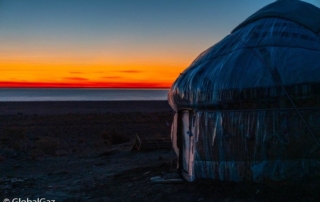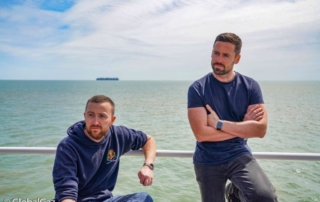Uzbekistan – 139th Country
Uzbekistan – 139th Country. To see where I have been so far, check out my map as I count down the final 93 countries on the road to all 193 UN countries. Uzbekistan is my 139th country. Check out the best 193 travel books to read! Uzbekistan is a double landlocked country in the Central Asia. The country has been at the crossroads and under the thumb of many empires. First recorded history dates to the 8th century BC as Eastern Iranian nomads settled the lands. The Iranian Achaemenid and Macedonians also took their turn at ruling the area. In the 7th century, Arabs made their way to Uzbekistan and the people converted to Islam. The father of Uzbekistan is considered to be Timur, the first ruler of the Timurid Empire. Uzbekistan was incorporated into the Russian Empire in the 19th century and then the Soviet Union. Uzbekistan became independent in 1991 when the Soviet Union collapsed. Islam Karimov ruled the country from 1991 until his death in 2016. His successor, President Mirziyoyev, moved the country in [...]
Exploring The Aral Sea In Uzbekistan
Exploring The Aral Sea In Uzbekistan. When the name Uzbekistan slips into the conversation, images of the Silk Road waltz through my mind. I conjure pictures from Samarkand, Bukhara, and Khiva of ancient walled cities, ancient mosques, and azure-tiled minarets. Yet, there is more to explore in Uzbekistan than just the Silk Road. Aral Sea Overview The Aral Sea at one time was the 4th largest lake in the world, but since the 1960s it has shrank to its current size, which is 90% smaller. The Aral Sea can be found in the western part of Uzbekistan and extends into Kazakhstan. The disappearance of the Aral Sea is considered to be "one of the planet's worst environmental disasters". Beginning in the 1960s the Soviet government headed by Nikita Khrushchev diverted the rivers that fed the Aral Sea for a series of irrigation projects. The Amu Darya and Syr Darya rivers were diverted into a series of irrigation canals to create an industrialized agricultural industry. Only 10% of [...]
Kach Howe … Dreamed Of Being A Diplomat
Kach has traveled to 136 countries. Kach Howe Counting Countries. Kach popped up on my radar screen in early summer and we have been trying to schedule a call since then. Statistically speaking, most 193ers are older, white males from North America or Western Europe, but I am always on the lookout to have a differing perspective. Kach offers a unique voice being both a female and a Filipina. Kach has traveled to 136 countries and all the more impressive on a passport that is ranked a mediocre 61. Previously on Counting Countries I spoke with April Peregrino who is also a Filipina by ethnicity but travels with a US passport. Kach Howe Counting Countries. I am reminding you that Counting Countries is now partnered with Patreon. Patreon is a platform that allows patrons, that’s you, to support creators, and that is me creating Counting Countries. And thanks to my patrons, Ted Nims, Bisa Myles, Ryan Gazder, and Adam Hickman. I also want to welcome new patron, Stephanie Rowe, a friend of mine in Bangkok. She has [...]
Charles Veley … And The Commitment To Travel
Charles has traveled to every country in the world and is the founder of MTP I had known of Charles for many years, both his accomplishments and the Most Traveled People. I had the opportunity to meet Charles in person at the Extreme Travel International Congress at the Principality of Sealand. He was one of the 25 travelers at the congress and I was able to sit next to him at one meal and listen in on his travel stories. I am reminding you that Counting Countries is now partnered with Patreon. Patreon is a platform that allows patrons, that’s you, to support creators, and that is me creating Counting Countries. And thanks to my other patrons, Ted Nims, Bisa Myles, Ryan Gazder, and Adam Hickman. As thanks, they are able to listen to additional interviews like the extra interview I did with Per Besson and Petro Marias, only available to them. Before I speak with Charles, I want to introduce Counting Countries’s new partner, Untamed Borders. Untamed Borders is well known in our community for [...]
Meeting Prince James And Liam Of The Principality Of Sealand
Meeting Prince James And Liam Of The Principality Of Sealand. Let’s face it, many people around the world are fascinated with the royals. Just think of the obsession with Princes Diana or the weddings of Harry & Meghan and William & Kate. Royal family intrigue is not typically of interest to me, but I had the awesome opportunity to meet with Prince James and Prince Liam during a recent visit to Europe. There are many expectations when you are meeting with royalty. Will they be a pompous jerk, a dismissive twerp, or an empty-headed royal? Well, I am pleased to note that Prince James and Prince Liam were down-to-earth, regular guys. You might not recall seeing Prince James or Liam’s faces splashed across People Magazine or the Daily Mail; they are lesser known royals. The Princes are third generation royals of the Principality of Sealand, an independent sovereign nation found in the North Sea near the port city of Harwich in England. The Principality was founded in 1967 when their grandfather, Prince Paddy Roy Bates, stormed [...]
Where To Eat In Lahore
Where to eat in Lahore. Lahore is a giant metropolis in the state of Punjab, only an hour drive from India. I have chosen a couple of my favorite places to eat in the city. Heera Chargha - Temple Road If you like grilled chicken … and I mean a lot of tasty, fresh grilled chicken you got to go to Heera Chargha. Sit down, pull up your chair, and wait for giant platters of succulent chicken to be piled up on the table. Then expect non-stop plates of fresh naan bread to be delivered. Break off a piece of bread, and grab a hunk of chicken. The chicken is barbecued right on the street in front of the restaurant. This is a down to earth restaurant that is popular with the locals. BKT, Butt Karahi Tikka - 17 Temple Road, Safanwala Chowk This is the place to go for Karahi style chicken. The chicken is combined with ginger, coriander, garlic, chili in a slow cook curry. The restaurant is packed all of time with locals descending on this [...]







